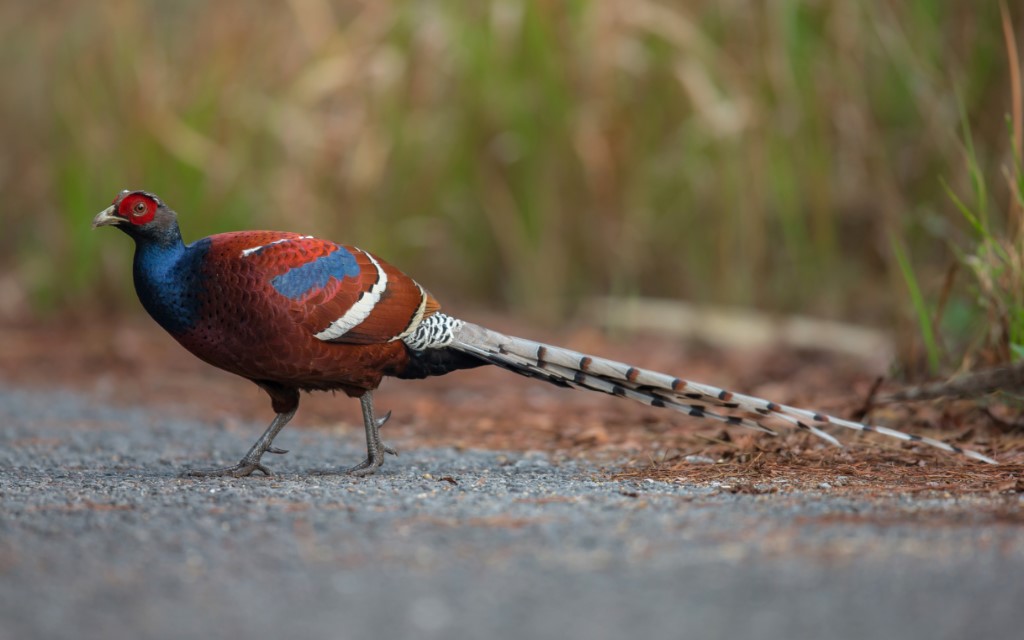Villagers and local NGOs in Mizoram have come together to help save Mrs. Hume’s Pheasant, a rare bird that is also the state bird of Mizoram. Their joint effort has led to the creation of a new nesting site in the hills, giving hope for the survival of this threatened species.
Mrs. Hume’s Pheasant, known locally as Vavu and scientifically as Syrmaticus humiae, has become increasingly rare in recent years. The main reasons for its decline are the loss of forests, shifting farming methods, and occasional hunting. The bird prefers the edges of forests near abandoned farmland, but these habitats are shrinking. Most of the remaining pheasants are now found in small areas at higher altitudes, especially in the Champhai and Saiha districts. Even though the bird is protected by law, many people in the region are not aware of its status, and enforcing the rules is not always easy.
The latest conservation project took place in Farkawn village, where residents worked alongside NGOs to make a safe place for the pheasants to nest. The village council played a key role in this effort, helping to organise and support the work. The new nesting area was carefully chosen to provide the thick ground cover and peace that the birds need to breed successfully.
Such community-led projects are very important for the future of Mrs. Hume’s Pheasant. Mizoram’s forests have been shrinking for decades, mainly due to traditional farming and forest fires. In the past, forests covered most of the state, but now only small patches remain. This makes it even more important for local people to protect what is left.
The new nesting site in Farkawn is already raising awareness among villagers about the importance of protecting wildlife. Seeing the rare pheasant in the area has inspired many to take part in conservation. Experts say that involving local communities, enforcing wildlife laws, and spreading knowledge about the bird are all crucial steps for its survival.
The partnership between villagers and NGOs in Mizoram shows how much can be achieved when people work together. Their efforts to build a new home for Mrs. Hume’s Pheasant offer hope that this beautiful bird will continue to be a part of Mizoram’s natural heritage for years to come.
Vulnerable
Mrs. Hume’s Pheasant is currently classified as “Vulnerable” by the International Union for Conservation of Nature (IUCN), meaning it faces a high risk of extinction in the wild if threats are not addressed. The IUCN first assessed the species as vulnerable in 1994, and it has remained on the Red List ever since, due to ongoing declines in its population and habitat. Globally, the population is estimated between 6,000 and 15,000 individuals, with numbers believed to be falling as a result of habitat loss, degradation, and hunting. In Mizoram and other parts of its range, traditional shifting cultivation and frequent forest fires have reduced suitable habitat, while fragmentation makes it harder for the birds to find food and safe nesting sites.
Hunting and poaching remain significant dangers, as the bird is sometimes targeted for its meat and feathers. The introduction of non-native pheasant species and climate change add further risks. Despite these challenges, Mrs. Hume’s Pheasant is found in several protected areas in India, including Murlen National Park and Phawngpui (Blue Mountain) National Park in Mizoram, which are crucial for its survival. However, protected areas cover only a small portion of the bird’s potential habitat, making community-led efforts like those in Farkawn village vital for its continued existence.
The vulnerable status of Mrs. Hume’s Pheasant highlights the importance of ongoing conservation work. Without strong protection of its habitat, enforcement of wildlife laws, and active involvement from local communities, the future of this striking bird will remain uncertain. The recent nesting initiative in Mizoram, therefore, represents a significant step forward in the fight to save one of the region’s most treasured species.


